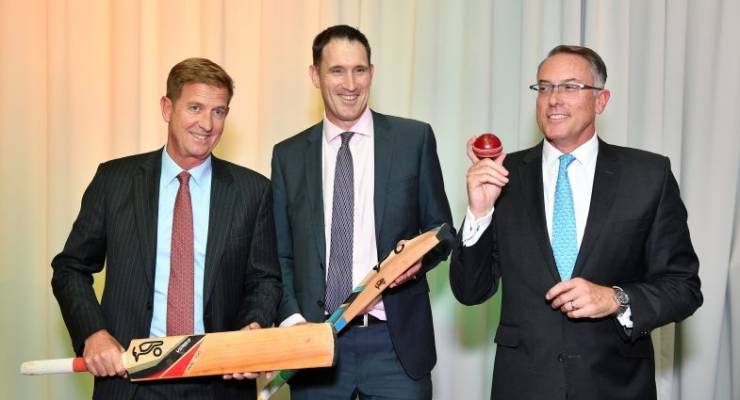
Is there anything more galling than the beaming faces of sports administrators announcing a multi-billion dollar windfall broadcasting deal? Proudly shaking hands, as if they just sold their start-up to Facebook for a few billion. Meanwhile, for the broadcaster, it’s the sporting equivalent of standing next to a sold sign in front of a house they just bought in Western Sydney for a million bucks using 90% leverage and a 4% interest-only loan.
Of course, Cricket Australia bosses, James Sutherland and David Peever (otherwise known for being Australia’s highest paid ribbon cutter), fresh off suspending the best batsman in almost a century as revenge for negotiating a generous pay rise, were very keen to take any win they can get. And a win they got.
But it was certainly no win for Australian cricket fans (you know, the organisation Sutherland and Peever are paid to represent). The $1.2 billion deal sold out Australian cricket lovers, quite literally. The numbers say it all — of the $1.2 billion being paid, the majority is being paid by Foxtel which is forking out $100 million a year in cash — Seven is paying only $75 million a year — the rest is contra advertising which is just in there to make the headline number sound more impressive. And Foxtel ain’t paying $100 million annually out of goodwill — they expect (and desperately need) to sell hundreds of thousands of additional subscriptions to even cover their costs, let alone make any money.
In securing its alleged coup, Sutherland and Peever managed to act not only unethically (purporting to accept a $70 million per year bid with Ten, before shopping Ten’s bid to other networks) but also greedily. Simply put, the increase in the value of the rights is coming straight from the pockets of cricket fans, the majority of whom do not subscribe to Foxtel. The treatment of Ten, which built the BBL from laughing stock to a financial powerhouse was especially deplorable.
The CA deal means one of two things will happen: either cricket lovers will be poorer (and Foxtel happier, if it is able to increase subs and reduce churn), or fans will simply stop watching the sport. Or more likely a combination of the two, given Foxtel isn’t exactly growing at the moment given you can both get Netflix and Stan for a quarter of the cost each month.
So Cricket Australia in one fell swoop has managed to both damage the game in Australia (less people watching means less people playing, and eventually, poorer on-field performance), and cost cricket lovers upwards of $600 a year. One Day Internationals, which in the 1980s and 1990s, were ratings and crowd powerhouses before CA stuffed up the tri-series, will now only be seen on Foxtel. Tests will be shown on FTA, however, the majority of tests are outside prime time.
There are a handful of genuine winners from the deal – that is, the guys from Cricket Australia who did the deal. More money pouring into Cricket Australia’s coffers means Sutherland and his band of executives will get very large pay rises (they run a bigger business now of course courtesy of the fans), in that classic sports administrator sleight of hand. It was exactly what Crikey said the AFL would do way back in 2011 when it announced its rights windfall. As we noted back then, “already among the highest paid executives in Australia (not merely for sporting organisation, but for all businesses), the billion dollar broadcast deal will allow [Andrew] Demetriou to increase his $2.2 million annual salary, along with loyal lieutenants, Adrian Anderson and Gillon McLachlan.” Not long after the deal was signed Demetriou did get his mooted payrise: a couple of years later he was paid $3.8 million.
Adam Schwab is a company director and the author of Pigs at the Trough: Lessons from Australia’s Decade of Corporate Greed.








Is it time to introduce a 100% tax on personal income exceeding, say, $1,000,000 per year?
$750,000 would be OK with me.
Anyone half savvy will live stream cricket free from anywhere in the world – just wield the “Willow”.
With luck it will lead to the demise of Foxtel, which will make things very interesting for sports broadcasting indeed, and then to cricket become a small time sport played largely by amateurs for the joy of it.
And perhaps big bash and the like can go back to Ten.